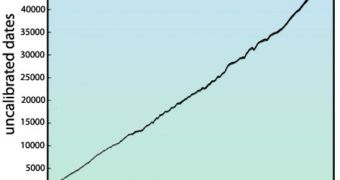After years in the making, scientists finally announce the creation of the first calibration curve for radio carbon dating. The achievement helps this investigation method achieve its full potential, analysts say, more than 30 years after investigations started. A lot of debate went into this issue, and camps crystallized a long time ago. Now, thanks to its new tools, RC dating can be deemed highly accurate up to 50,000 years in the past, ScienceNow reports. The calibration curve has highly anticipated and expected by archaeologists and geologists alike, as this will allow for them to construct more precise time lines for various events that took place in our planet's history.
A host of issues, such as climate modeling, human evolution and migrations, and our species' adaptation to the environment could get clarifications with the innovative tool, its creators say. The reason why 50,000 years is widely considered to be the limit for carbon dating technology is the fact that samples return inaccurate results if they are older. It all makes sense when looking at the simple mechanism that underlines the investigation method. As plants and animals live, they absorb trace amounts of the element carbon-14, which they store inside their bodies. After they die, the element is naturally no longer absorbed.
The carbon radioactive carbon compound is extracted directly from carbon dioxide (CO2). As it decays inside plant and animal remains, it “ticks like a clock,” researchers say. With RC dating, researchers can determine precisely how much time has elapsed since the artifact containing the compound died off. After the 50,000-year threshold, the amounts of carbon-14 remaining are widely considered to be too little to inform accurate measurements. The calibration curve enters into play when scientists need to compensate for factors such as solar activity, and the influence that the Earth's magnetic field exerts on carbon-14.
Details of the new calibration curve are published in the latest issue of the scientific journal Radiocarbon. In addition to bringing improvements to long-term measurements, it also provides experts with the necessary background to start correcting the early parts of the curve, which are used for dating more recent samples, such as from 1,000 to 10,000 years ago. Behind the new accomplishment were researchers from the Queen's University Belfast, in Northern Ireland, led by geochronologist and team leader Paula Reimer. The new curve is called INTCAL09.

 14 DAY TRIAL //
14 DAY TRIAL //